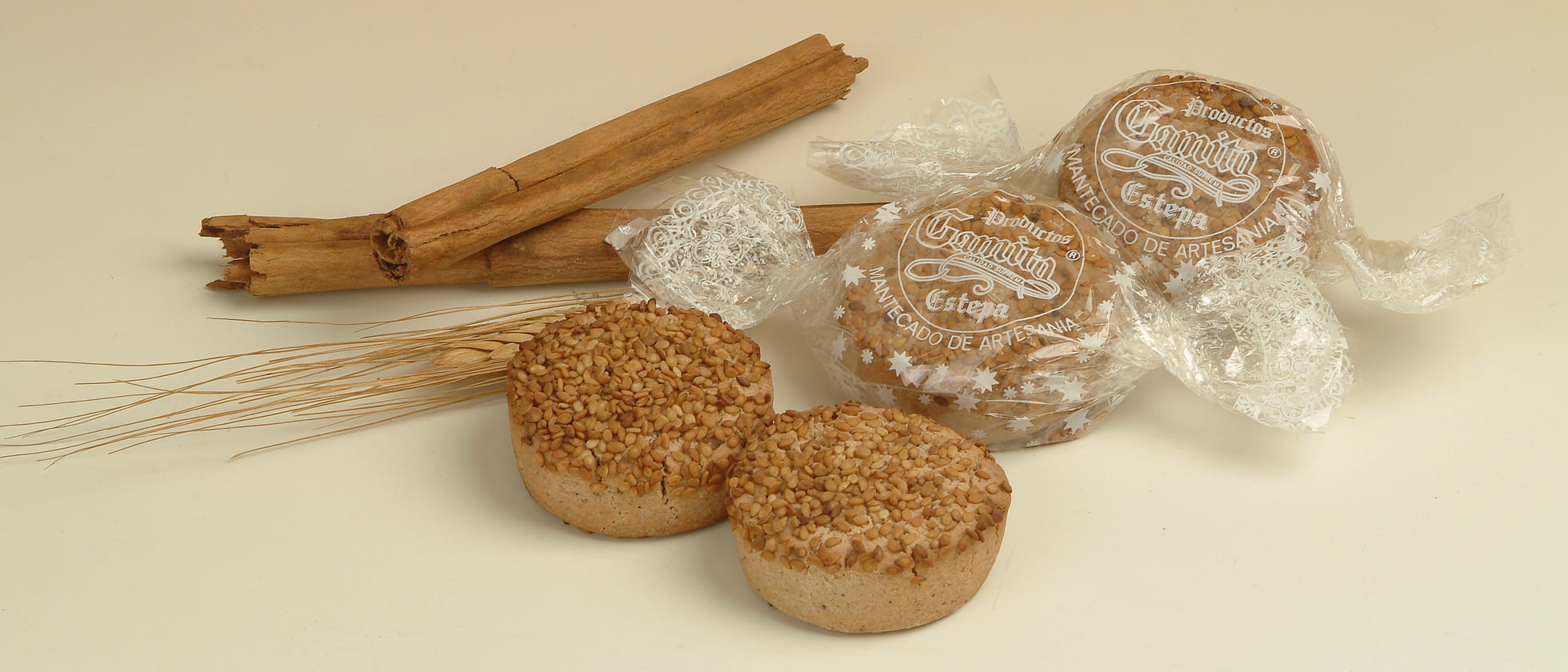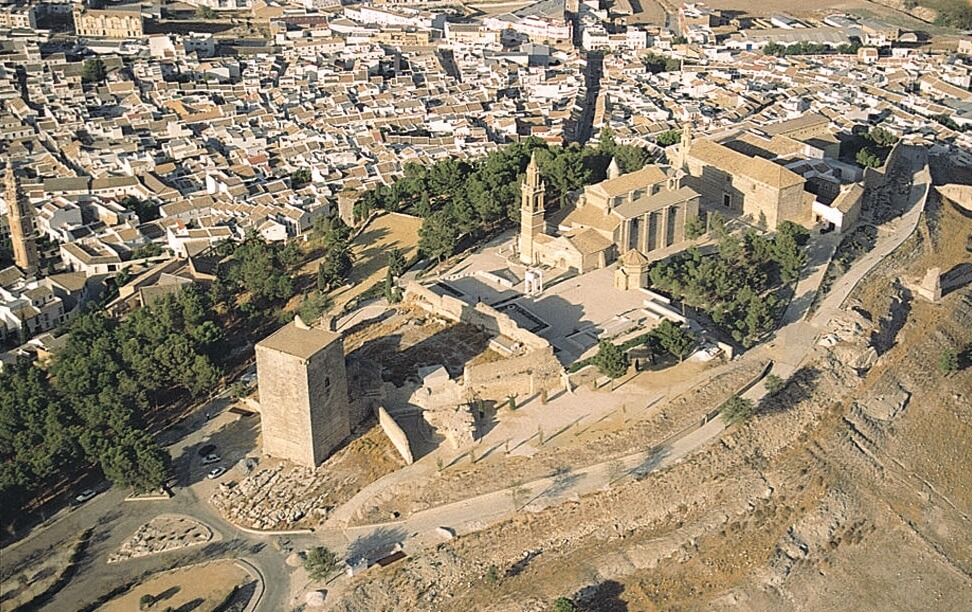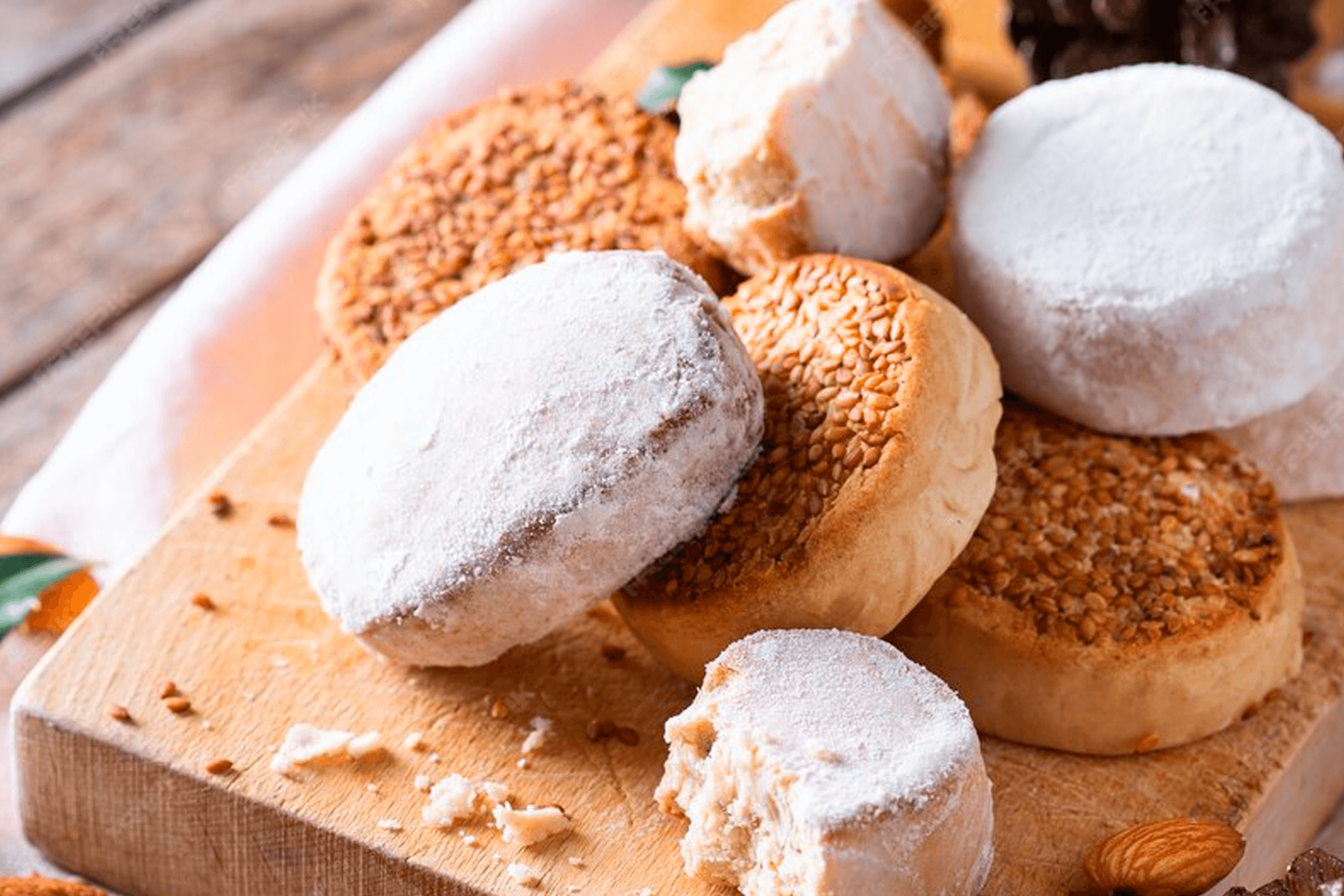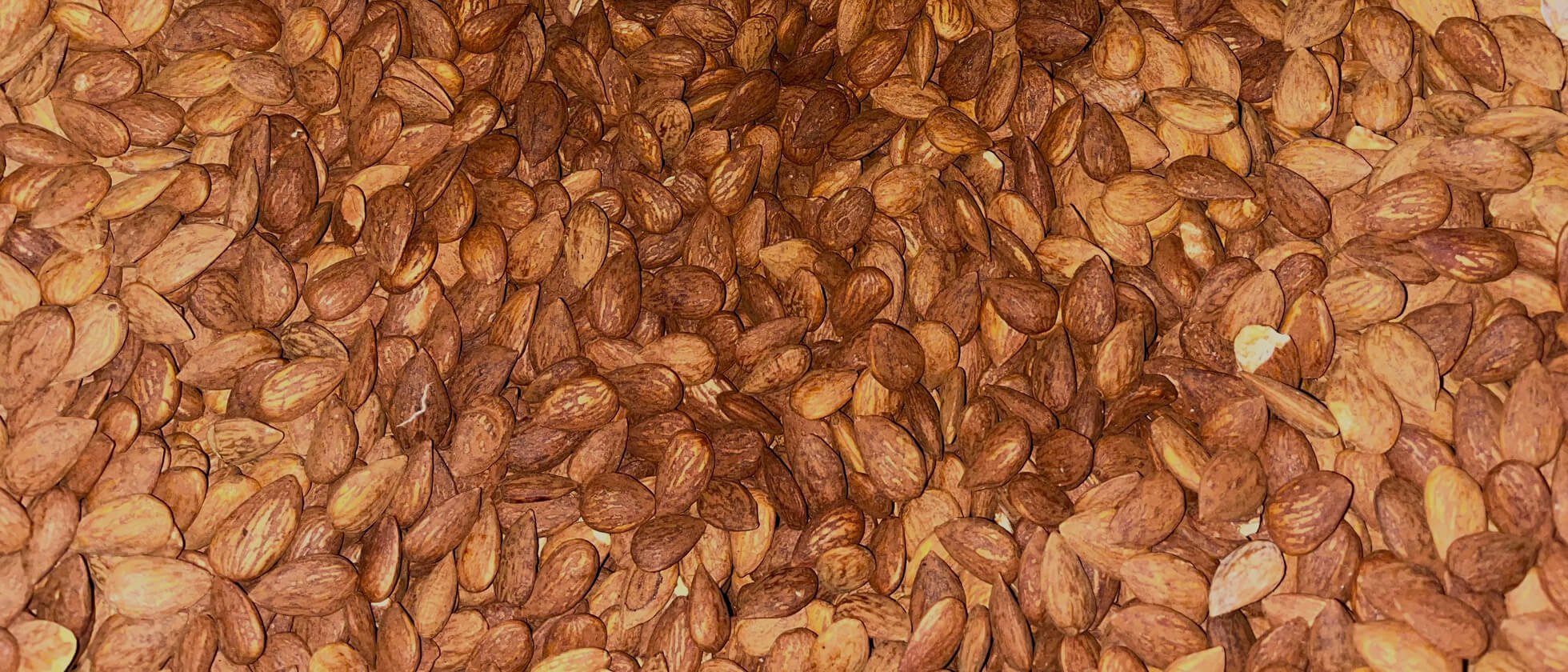
What are mantecados?
What do mantecados contain?
The magic of mantecados lies in the quality of their ingredients. Traditionally, these sweets are made from lard, which gives them their characteristic flavour and texture. Ingredients such as flour, sugar and almonds are added to this base, which are mixed until a soft dough is obtained.
There are variations that include cinnamon, lemon, coconut, chocolate or even anise, but the essence of a good mantecado always lies in the freshness and authenticity of its components. The simplicity of this recipe is precisely what has allowed mantecados to endure over time as a symbol of traditional, homemade baking.
Origin of mantecados
Mantecados are an emblem of Spanish baking, and their origin is closely linked to the history and culture of Andalusia, a region rich in culinary traditions.
Who invented mantecados?
The creation of mantecados is commonly attributed to the town of Estepa, in the province of Seville. It was in the 16th century when the nuns of the Convent of Santa Clara de Estepa began to make these sweets with the ingredients available in the region. However, it is considered that it was in the 19th century when they became popular, thanks to Micaela Ruiz Téllez who marketed these sweets throughout southern Spain (Seville, Córdoba, main cities of Malaga such as Antequera) and beyond.
Why are they called mantecados?
The name "mantecados" comes from lard, one of the main ingredients of these sweets. In ancient times, lard was an abundant and inexpensive product, used in numerous traditional recipes.
The inclusion of lard in the dough is what gives mantecados their characteristic soft and crumbly texture. Over the years, the term "mantecado" has stuck, becoming synonymous with these delicious morsels that sweeten Christmas festivities and other celebrations.
How are mantecados made?
The preparation of mantecados is a process that combines tradition and technique, and although the recipe may vary, the fundamental steps remain. To make mantecados, lard is kneaded with sugar, flour and often ground almonds, kneading until all the ingredients are well integrated.
Cinnamon, lemon zest or vanilla can be added to this mixture. They are shaped and placed on a baking tray and baked until they acquire a light golden colour. When cooled, they become soft and crumbly, ready to enjoy.
Where are mantecados made?
Mantecados originate in Spain, and although they are produced in various regions of the country, it is in Andalusia where the largest production centres are found. The town of Estepa, in the province of Seville, is especially famous for the production of these sweets, being known as the capital of the mantecado.
The great development of the factories in Estepa has allowed for industrial production that makes it possible for these delicious sweets to be distributed throughout the country and beyond, bringing a little piece of the rich Spanish pastry to the whole world.

What types of mantecados are there?
Mantecados, while sharing a common base, come in a variety of flavors and styles that make them even more appealing. Below, we explore some of the most popular types:
Almond mantecado
Almond mantecado is one of the most traditional. It is characterized by the incorporation of ground almonds into the dough, which gives it a unique flavor and texture. It is often sprinkled with icing sugar, giving it a delicious finishing touch.
Chocolate mantecado
This mantecado is perfect for chocolate lovers. The dough is enriched with cocoa powder, resulting in a sweet with an intense chocolate flavor that contrasts wonderfully with the typical softness of mantecado.
Lemon mantecado
Lemon mantecado is refreshing and light, thanks to the incorporation of lemon zest into the dough. This citrus fruit gives it a fresh aroma and a slightly acidic flavor that balances the sweetness of the mantecado.
Coconut mantecado
For those who prefer a tropical touch, coconut mantecado is ideal. The dough is mixed with grated coconut, offering a more fibrous texture and a sweet and exotic flavor that sets it apart from the rest.
Cinnamon mantecado
This type of mantecado is fragrant and spicy, thanks to the ground cinnamon that is incorporated into the mixture. The cinnamon gives it a warm and comforting aroma, making it perfect for the colder times of the year.
Olive oil mantecado
Olive oil mantecado is a healthier variant, where lard is replaced by olive oil. This change not only reduces saturated fats, but also provides a milder flavor and a slightly different texture, without losing the essence of traditional mantecado.
When are mantecados eaten?
Mantecados are a sweet traditionally associated with the Christmas holiday in Spain. During Christmas, it is common to find trays full of mantecados in Spanish homes, shared between family and friends.
However, its popularity has transcended the Christmas season, its unmistakable flavour and versatility in recipe have allowed this Christmas product to adapt to different times of the year and occasions, always maintaining its special place in Spanish gastronomic tradition.
Difference between mantecados and polvorones

Although mantecados and polvorones are traditional sweets that are often confused, there are key differences between them. The main difference lies in the texture and ingredients. Mantecados are usually softer and crumblier, thanks to the high proportion of lard in their dough.
On the other hand, polvorones have a more compact and powdery texture, hence their name, due to the higher amount of flour and almond in their composition. In addition, polvorones are distinguished by having a layer of icing sugar on the surface and are often flavored with cinnamon or lemon zest.
While both sweets are emblematic of Christmas in Spain, polvorones tend to be a bit denser and more flavorful. In short, although similar in appearance and taste, mantecados and polvorones offer unique taste experiences that have made them favorites of the holidays and beyond.
 Cookie preferences
Cookie preferences






Leave a comment